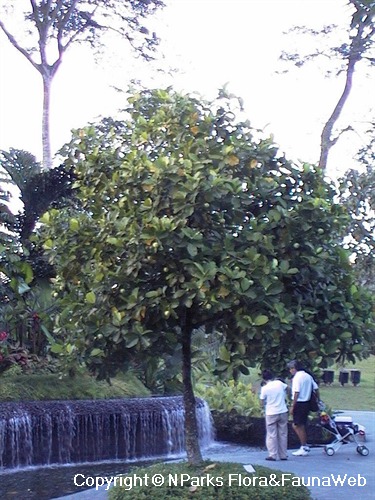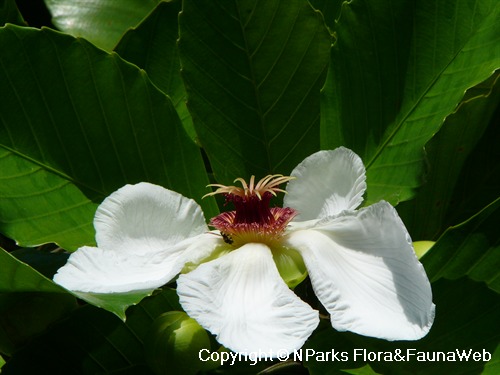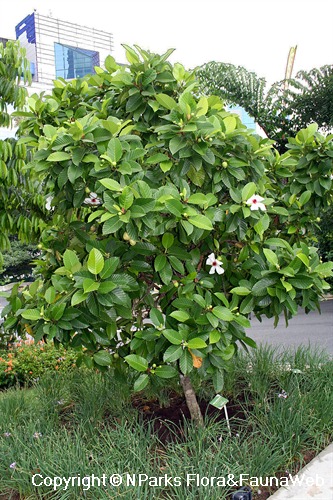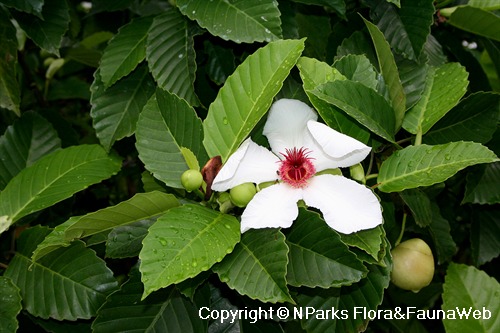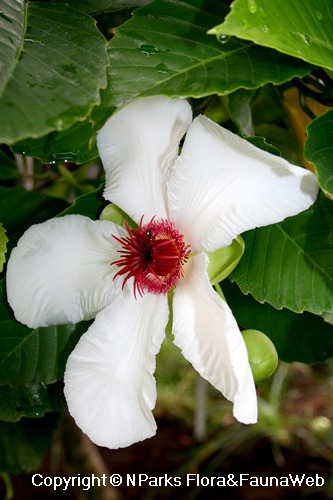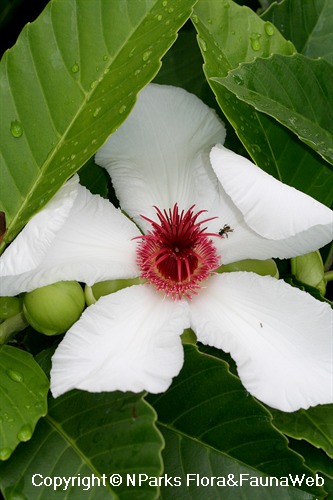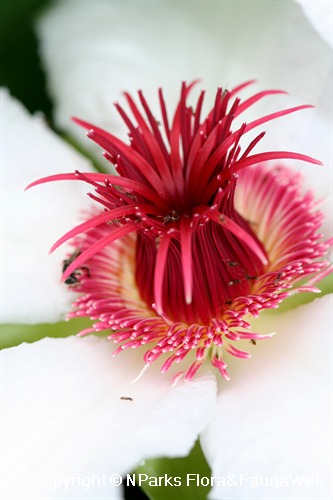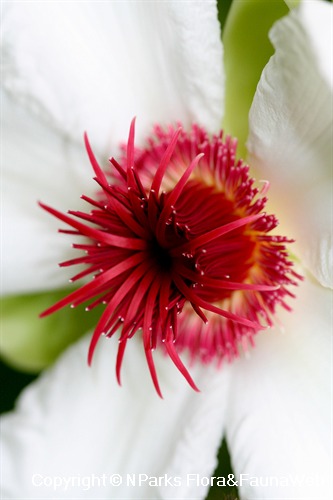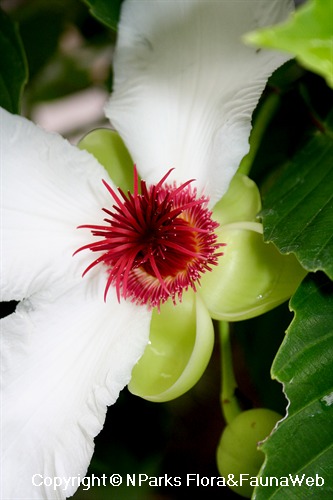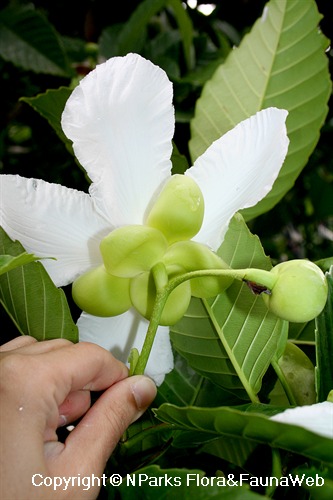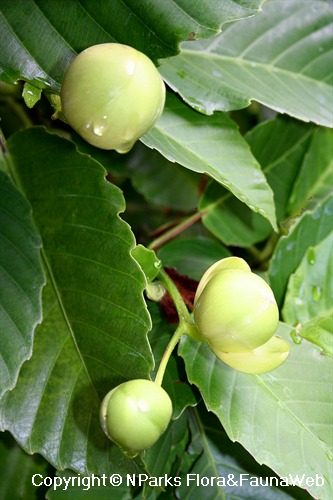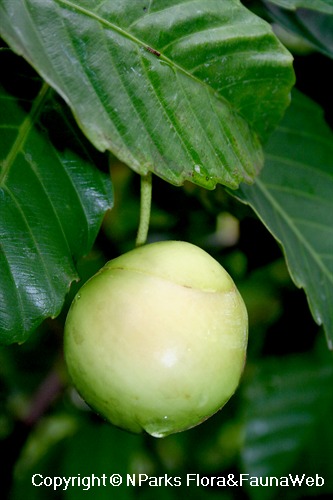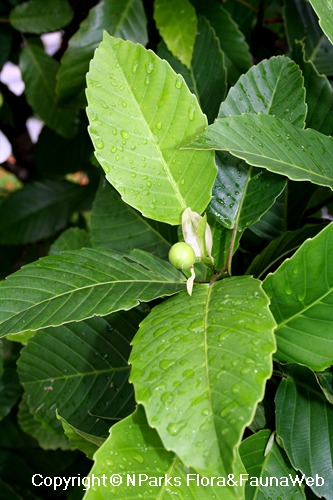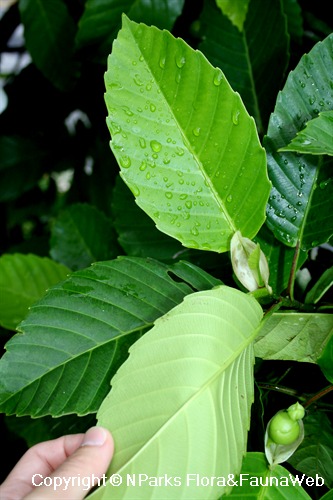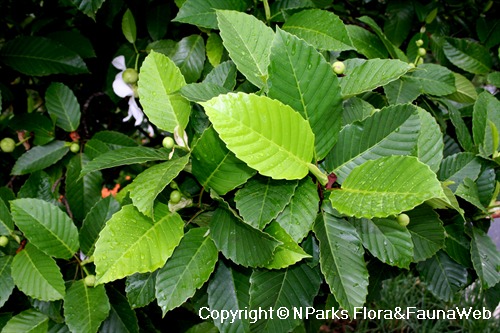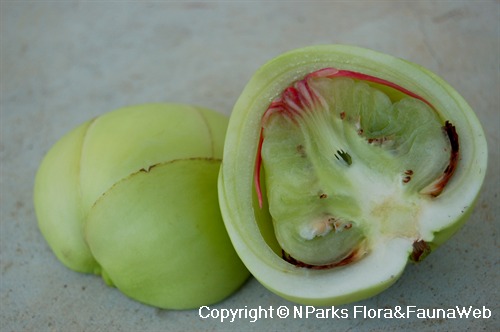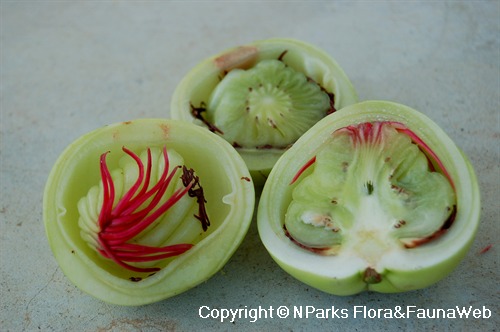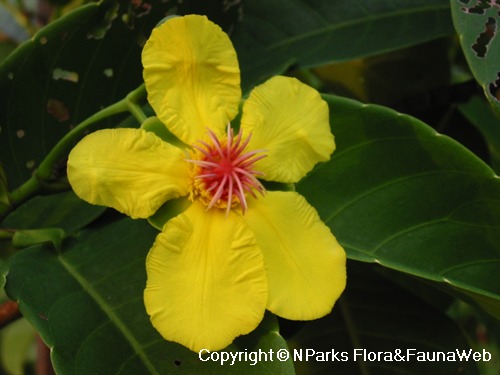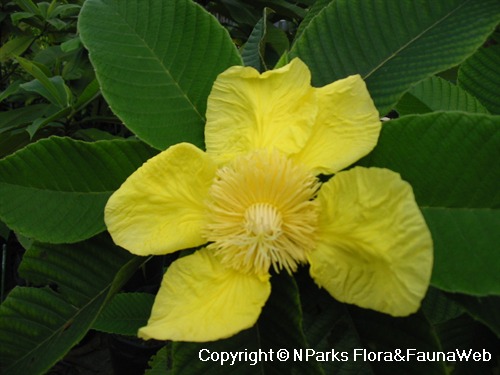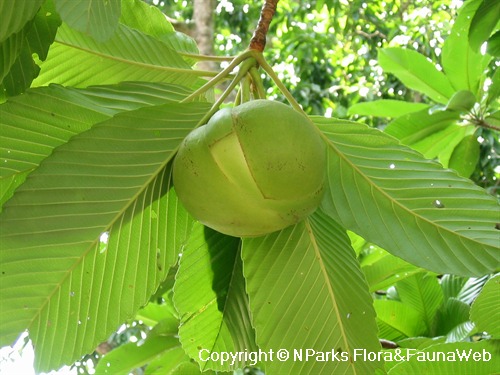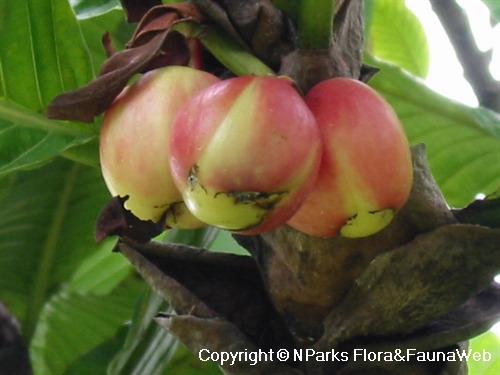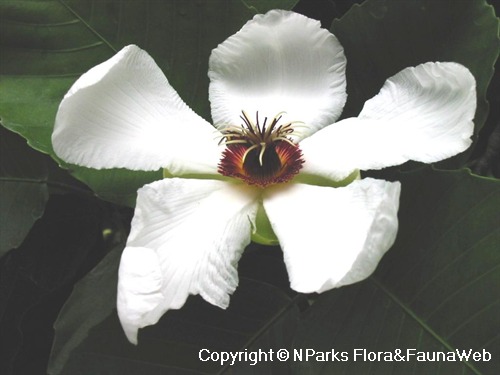
Back
Dillenia philippinensis Rolfe
| Family Name: | Dilleniaceae |
| Common Name: | Philippines Simpoh, Katmon |
Name
Classifications and Characteristics
| Plant Division | Angiosperms (Flowering Seed Plants) (Dicotyledon) |
|---|---|
| Plant Growth Form | Tree (Small (6m-15m)) |
| Mode of Nutrition | Autotrophic |
| Plant Shape | Rounded |
Biogeography
| Native Distribution | The Philippines |
|---|---|
| Native Habitat | Terrestrial |
| Preferred Climate Zone | Tropical |
| Local Conservation Status | Non-native |
Description and Ethnobotany
| Growth Form | Evergreen small tree, able to grow up to about 6 - 15 m tall. |
|---|---|
| Trunk | Bark is shallowly fissured and greyish-brown to reddish-brown. |
| Foliage | Green elliptic to oblong-ovate leaves, simple and alternate arrangement, margins serrate, venation prominent, measuring about 8 - 25 cm long and 6 - 16 cm wide, petiole about 3.5 - 5 cm long with broad, caducous stipules about 1 cm wide. |
| Flowers | White 5-petaled flower about 10 - 15 cm wide, solitary or paired, 5 white petals obovate in shape and about 4 - 6 cm long, 5 pale green sepals cup-shaped, stamens in 2 groups (outer stamens yellow and about 11 mm long, inner stamens purple and about 15 - 23 mm long). |
| Fruit | Fruit is globose in shape and about 5 - 6 cm wide, consist of black seeds embedded in a soft pulp inside. |
| Habitat | Can be found in primary and secondary forests and along river banks. |
| Etymology | Genus Dillenia is named after Johannes Jacobus Dillenius (1684 - 1747), a British botanist and physician, and also the first President of the Botanical Society of London. Species philippinensis means from the Philippines. |
| Ethnobotanical Uses | Edible Plant Parts : Edible Fruits Food (Fruit or Vegetable): Fruits, young shoots and flowers are used as a flavouring in dishes. Medicinal: Juice from the fruit is used in the treatment of cough and chest pain. |
Landscaping Features
| Desirable Plant Features | Ornamental Flowers, Ornamental Foliage, Fragrant (Fruits) |
|---|---|
| Landscape Uses | Parks & Gardens, Small Gardens |
Fauna, Pollination and Dispersal
| Fauna Pollination Dispersal Associated Fauna | Bee-Attracting |
|---|---|
| Seed or Spore Dispersal | Abiotic (Water) |
Plant Care and Propagation
| Light Preference | Full Sun |
|---|---|
| Water Preference | Moderate Water |
| Plant Growth Rate | Moderate |
| Rootzone Tolerance | Moist Soils, Well-Drained Soils |
| Propagation Method | Seed |
Foliar
| Foliage Retention | Evergreen |
|---|---|
| Mature Foliage Colour(s) | Green |
| Mature Foliage Texture(s) | Smooth, Glossy / Shiny, Raised / Sunken Veins, Thick |
| Foliar Type | Simple / Unifoliate |
| Foliar Venation | Pinnate / Net |
| Foliar Margin | Doubly Serrate |
Floral (Angiosperm)
| Flower & Plant Sexuality | Bisexual Flowers |
| Flower Colour(s) | Red, White |
|---|---|
| Flower Symmetry | Radial |
| Flowering Opening Time | Daytime |
| Flower Lifespan on Plant | 1 Day |
| Flowering Habit | Polycarpic |
Fruit, Seed and Spore
| Mature Fruit Colour(s) | Green |
|---|---|
| Fruit Classification | Simple Fruit |
| Fruit Type | Fleshy Fruit |
Image Repository
Others
| Master ID | 1552 |
|---|---|
| Species ID | 2845 |
| Flora Disclaimer | The information in this website has been compiled from reliable sources, such as reference works on medicinal plants. It is not a substitute for medical advice or treatment and NParks does not purport to provide any medical advice. Readers should always consult his/her physician before using or consuming a plant for medicinal purposes. |

